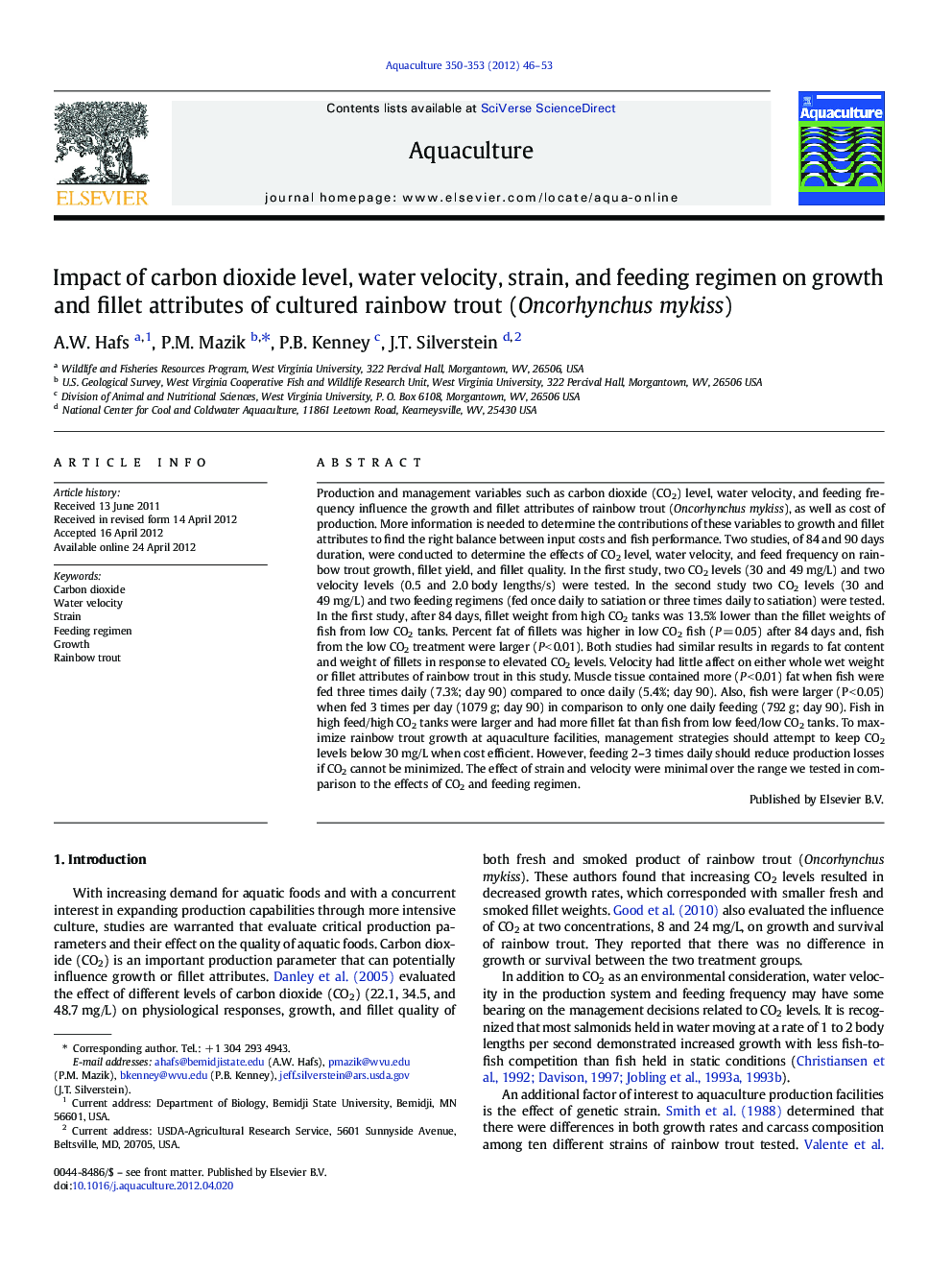| کد مقاله | کد نشریه | سال انتشار | مقاله انگلیسی | نسخه تمام متن |
|---|---|---|---|---|
| 2422452 | 1552890 | 2012 | 8 صفحه PDF | دانلود رایگان |

Production and management variables such as carbon dioxide (CO2) level, water velocity, and feeding frequency influence the growth and fillet attributes of rainbow trout (Oncorhynchus mykiss), as well as cost of production. More information is needed to determine the contributions of these variables to growth and fillet attributes to find the right balance between input costs and fish performance. Two studies, of 84 and 90 days duration, were conducted to determine the effects of CO2 level, water velocity, and feed frequency on rainbow trout growth, fillet yield, and fillet quality. In the first study, two CO2 levels (30 and 49 mg/L) and two velocity levels (0.5 and 2.0 body lengths/s) were tested. In the second study two CO2 levels (30 and 49 mg/L) and two feeding regimens (fed once daily to satiation or three times daily to satiation) were tested. In the first study, after 84 days, fillet weight from high CO2 tanks was 13.5% lower than the fillet weights of fish from low CO2 tanks. Percent fat of fillets was higher in low CO2 fish (P = 0.05) after 84 days and, fish from the low CO2 treatment were larger (P < 0.01). Both studies had similar results in regards to fat content and weight of fillets in response to elevated CO2 levels. Velocity had little affect on either whole wet weight or fillet attributes of rainbow trout in this study. Muscle tissue contained more (P < 0.01) fat when fish were fed three times daily (7.3%; day 90) compared to once daily (5.4%; day 90). Also, fish were larger (P < 0.05) when fed 3 times per day (1079 g; day 90) in comparison to only one daily feeding (792 g; day 90). Fish in high feed/high CO2 tanks were larger and had more fillet fat than fish from low feed/low CO2 tanks. To maximize rainbow trout growth at aquaculture facilities, management strategies should attempt to keep CO2 levels below 30 mg/L when cost efficient. However, feeding 2–3 times daily should reduce production losses if CO2 cannot be minimized. The effect of strain and velocity were minimal over the range we tested in comparison to the effects of CO2 and feeding regimen.
► Fillet weight and percent fat from high CO2 tanks was lower than from low CO2 tanks.
► Fish fed 3 times/day were larger and fatter than fish fed 1 time/day.
► High feed/high CO2 tank fish were larger and fatter than low feed/low CO2 tank fish.
► Velocity and strain had little affect on whole wet weight or fillet attributes.
Journal: Aquaculture - Volumes 350–353, 20 June 2012, Pages 46–53